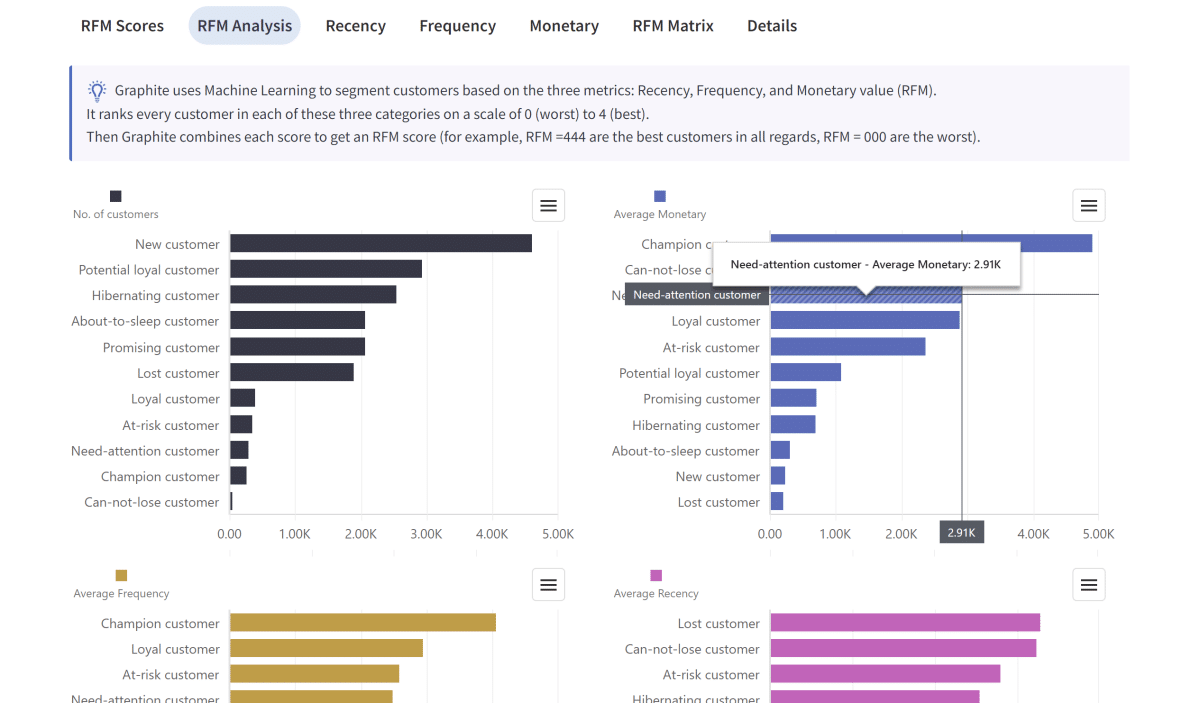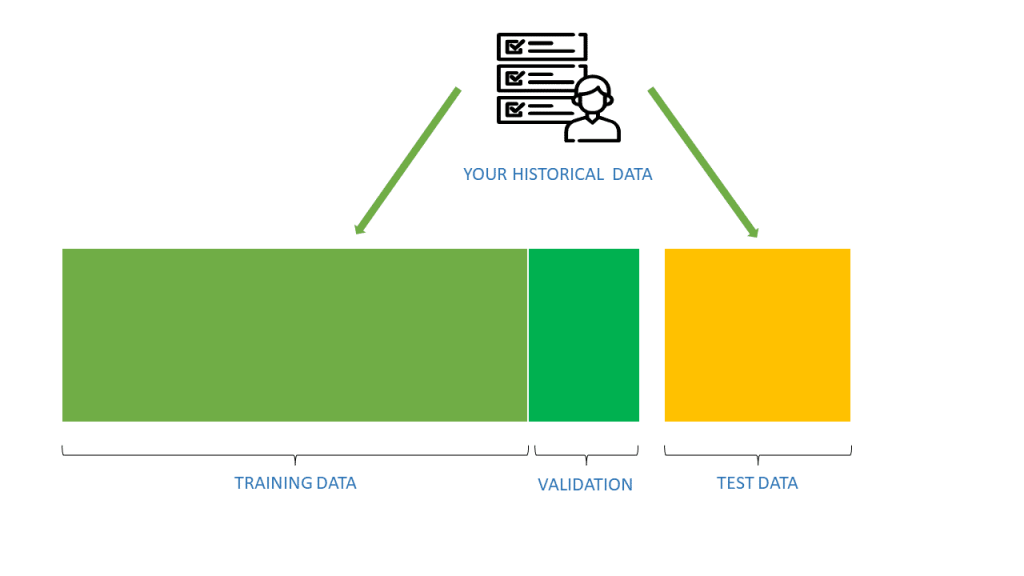Predictive Analytics and Decision Making
Predictive analytics and decision making are two essential tools for data scientists. Combining precision analytics and decision making helps you grow your business. You can make more informed decisions as you analyze vast amounts of information.
What is predictive analytics?
Predictive analytics is a process that takes in vast amounts of data, analyzes it. Predictive analytics is a type of data analysis. Predictive analytics use statistical techniques, algorithms, and machine learning models to analyze data. Predictive analytics analyzes current and past data. Predictive analytics then makes predictions about future behavior or events. The predictive analytics models are then made. The predictive model provides insights into past and present scenarios. Using these insights, you can make better strategic decisions, and accurate forecasts.

What is decision making?
Decision making uses gathered facts, analysis, and judgment. Decision making identifies an optimal solution for a problem or situation.
Combining predictive analytics and decision making
Combining predictive analytics and decision making helps you make better decisions faster. This is important when considering customer interactions, market trends, and risks. Predictive analysis helps quantify complex problems into easy-to-understand metrics. This enables you to evaluate your options before making business decisions. You can leverage historical data and current information to make better decisions. Current data could include consumer purchase patterns or usage trends over time. These can provide valuable insights into potential outcomes. This is particularly helpful when you need to make difficult choices about opportunities.
Predictive modeling
A well designed predictive modeling process can identify previously unknown customer data patterns. Predictive analysis provides insight into how consumers may engage with your business’ products. An optimal predictive analytic model considers multiple factors. These may include individual needs and market conditions. Predictive modelling gives you a deeper understanding of customers’ present & future needs. That leads them closer to smarter, consolidated, efficient decision-making. Predictive insights lead to better business decision making. It’s not about generating numbers. It’s more about providing real insights that would otherwise be impossible to find. Those insights are backed by Predictive Analytics Decision Making technology.
Benefits of combining predictive analytics and decision making
You can use predictive analytics and decision making to make a more effective decision.
- Stay ahead of your competition: Predictive analytics uses data, machine learning, and AI to predict future outcomes. Decision making uses rational thought processes to determine the best action. Combining predictive business analytics with effective decision-making gives you an invaluable tool. This way, you can stay ahead of your competition.
- Risk reduction: Combining predictive analytics with decision making techniques helps you to reduce risk. Using historical data, you can anticipate customer needs or market changes.
- Identify opportunities: By leveraging advanced algorithms and the analytics process, you can quickly analyze large datasets to identify opportunities or threats. Large data sets can include information like customer demographics or purchasing patterns. This enables you to take proactive steps toward improving your operations.
- Resource allocation: Using predictive models and data analytics for marketing campaigns is useful. This helps ensure that resources are allocated efficiently and effectively. You can target only relevant customers, instead of wasting time on unqualified leads.
How does predictive analytics help decision making?
Predictive analytics uses advanced algorithms and machine learning techniques. Predictive analytics analyzes past and current datasets. The predictive model generates more accurate predictions. By understanding how certain events will affect future results, you leverage these insights. You can make more informed business decisions that often lead to improved performance.
Predictive models enable us to fact-check our intuition. That way, you don’t have to rely on gut instinct when making decisions. Predictive models are based on historical evidence. Predictive models process that data through sophisticated statistical algorithms and methods. Predictive models become like advisors helping you navigate challenging situations. Predictive models give reliable advice without outside experts or industry specialists.
Using predictive analytics improves the accuracy and consistency of your decision making. This leads to higher efficiency levels and cost savings over time. Predictive insight reduces uncertainty about market trends or customer behavior. Predictive analytics provide strategic guidance.

Where has predictive analytics and decision making been successful?
Predictive analytics uses data and algorithms to analyze past trends and behaviors to make predictions about the future. This complex decision making technology has been successfully implemented in numerous industries. These include: SaaS (Software as a Service), eCommerce, and Finance.
Predictive analytics can accurately forecast events or trends. Predictive analytics examines all available data sources. These can include things such as customer information or market activity. By using predictive analytics, you can gain valuable insights into your customers’ behavior. You can then strategically adjust your operations accordingly.

Data analysis
Data analysis is at the center of this process. Data analysis requires collecting relevant information from multiple sources. Then, you run it through sophisticated models that turn numbers into meaningful insights. These give you great insights for better decision making. Predictive models use algorithms and machine learning techniques to generate accurate forecasts. Predictive analytics also uncovers hidden patterns within the data sets.
Machine learning algorithms
There are many Machine learning algorithms, like Random Forest or Support Vector Machines. These machine learning algorithms analyze large amounts of data quickly and efficiently. Decision trees can also help to guide better decision making. These models help identify correlations between variables more accurately.
Predictive analytics and the SaaS industry
In the SaaS industry, companies have successfully implemented predictive tools. These can monitor user engagement with products online. They can also measure sales opportunities based on past experiences. They can help to bring costs down significantly simultaneously. For example, Amazon uses an AI-based recommendation engine. The engine suggests items related to consumer searches. This results in higher conversion rates and increased customer satisfaction.
Predictive analytics and eCommerce
eCommerce merchants leverage similar analytical capabilities. They use predictive analytics to deploy personalized recommendations. This provides a superior user experience. It also delivers better ROI than manual forecasting techniques.
Predictive analytics and Finance
Financial institutions use advanced analytic engines to build profitable portfolios. Predictive analytics can manage the contextual effect of extreme market volatility. This enables better investment returns.
Using advanced predictive analytics applications provides substantial benefits. These include improving existing processes, reducing costs, or optimizing performance levels.
The difference between descriptive, diagnostic, predictive, and prescriptive analytics
Predictive analytics and decision-making helps you leverage data to make better strategic decisions. You can maximize your insights into customer behavior and develop targeted strategies. These enable future growth. You need advanced analytical techniques in the digital era of big data.
- Descriptive analytics focuses on summarizing sets of data that have already occurred. Descriptive analytics gives you a historical view of what has happened. Descriptive analytics helps answer the question, “What happened?”
- Diagnostic analytics determine cause-effect relationships among variables. It helps answer the question, “Why did it happen?” by analyzing the root causes of past events.
- Predictive analytics models use statistical methods to forecast potential outcomes. It helps answer the question, “What is likely to happen?” by using historical data to predict future trends.
- Prescriptive analytics provides advice on what actions to take to achieve desired outcomes. It helps answer the question, “What should we do?” by recommending specific actions based on the predictions made by the predictive models.
Use of predictive analytics in SaaS
With predictive analytics and decision-making, SaaS companies can identify user trends and patterns. SaaS companies can optimize marketing campaigns. SaaS companies can better anticipate customer needs. SaaS companies can make more informed decisions. This helps them stay competitive, acquire customers, and maximize customer lifetime value.
Customer segmentation is one example of predictive analytics and decision making in the SaaS industry. SaaS companies can use data to segment their customer base into specific groups. These can be target markets or customer segments. This enables SaaS companies to personalize the user experience. This empowers SaaS companies to focus marketing efforts on users who are more likely to become high-value customers.
A SaaS company can use predictive analytics to identify which customers are more likely to buy certain products or services. By leveraging segmentation data, the company can then focus on those groups. The SaaS company can tailor their marketing efforts to meet their individual needs.
SaaS companies can use predictive analytics and decision making to predict user behavior. Companies can use predictive analytics to anticipate user actions. SaaS companies can develop models that determine how users might react to specific changes.
With this data, companies can create targeted campaigns. These are better tailored to each user and maximize the effectiveness of their messaging. For example, an e-commerce SaaS company can use predictive analytics to identify which products a customer is likely to purchase, and when they are likely to do so. By leveraging this data, the company can create targeted campaigns. These are tailored to the customer’s buying behavior, increasing the likelihood of conversion.
Predictive analytics and decision making are essential tools for successful SaaS companies. Companies can use these two technologies to maximize the effectiveness of their marketing campaigns. SaaS companies can personalize the customer experience. SaaS companies can anticipate user behavior. SaaS companies can remain competitive and maximize their customer lifetime value.
How to create a meaningful predictive model
Here are some key tips for creating a meaningful predictive model:
- Understand your data: This is the foundation of any successful predictive model. You need to know where your data comes from, how it was collected, and how it’s structured. Reliable data sources are crucial to ensure your results are accurate.
- Choose the right model: Don’t just pick a random model. Select one that aligns with your data and use case. There are various types of models available, so focus on finding the one that best suits your specific business needs. This will allow you to optimize the results you get from your model.
- Test, validate, and refine: Building a model is an iterative process. Don’t expect to get it perfect on the first try. Make sure to test your model thoroughly, validate its accuracy, and refine it based on the results. Stay up-to-date on new data science developments. Experiment with different tools and techniques to find the best approach for your needs.
- Monitor model performance: Don’t just build a model and forget about it. Regularly monitor its performance, test it on new datasets, and be aware of potential shifts in your data. As data evolves, so should your predictive analytics model. This will help you stay ahead of trends and take advantage of new opportunities.
- Ensure accuracy: Accuracy is paramount for any meaningful predictive model. Utilize best practices for data modeling. Continuously evaluate your model’s accuracy and performance. Techniques like cross-validation can help to evaluate your model. You can ensure the patterns observed in your training data apply to real-world scenarios. Test different scenarios and analyze the results to lead to more accurate predictions.
Conclusion
Data scientists rely on predictive analytics and decision-making to create effective solutions. Predictive analytics helps process data for more accurate decision-making. Decision-making processes give you logical methods to arrive at optimal solutions.
When choosing a predictive model, consider factors like accuracy, validity, and its effect on your business. You can leverage the power of predictive analytics and decision-making. You can make better decisions with predictive models.
No-code predictive analytics tools like Graphite Note are a great way for businesses to unlock the potential of their data. There’s no need to spend large amounts of money. You don’t need the technical expertise required by traditional data science solutions. Platforms like Graphite Note offer user-friendly interfaces. Graphite Note enables you to explore your data. You can discover hidden patterns. You can develop predictive models without needing any coding experience.
With no-code tools, even non-technical users can leverage the power of data science. You can gain valuable insights and make data-driven decisions quickly. Advanced machine learning capabilities can help you identify correlations. You can detect anomalies, gain insights, and make predictions to inform better business decisions. No-code tools eliminate the need for expensive data scientists, saving companies time and money.




